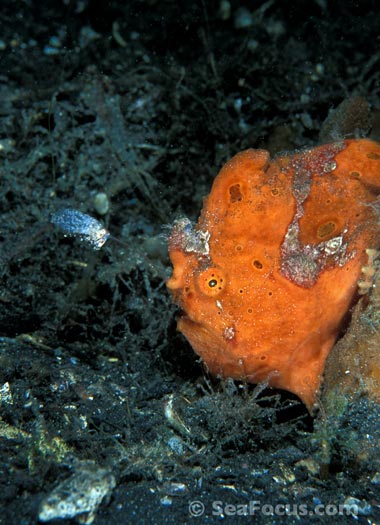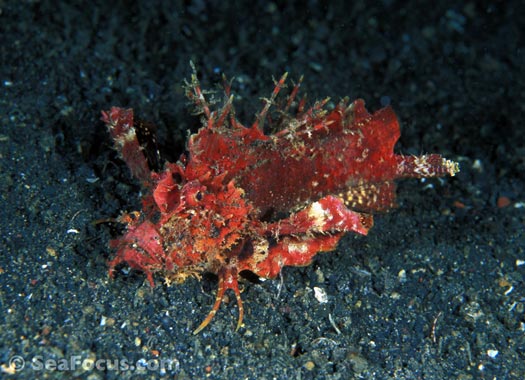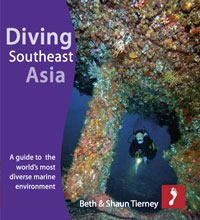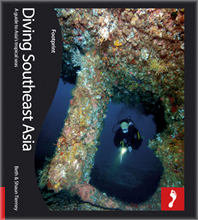
|
|
||||||||||||||||||||||||||||||||||||||||||
| Diving the Lembeh Straits | Western dive sites | Sulawesi, Indonesia |
||||||||||||||||||||||||||||||||||||||||||
|
 |
|||||||||||||||||||||||||||||||||||||||||
| Lembeh Straits dive photo gallery | Scuba diving features | |||||||||||||||||||||||||||||||||||||||||
|
||||||||||||||||||||||||||||||||||||||||||
| INFORMATION | EXPLORE | |||||||||||||||||||||||||||||||||||||||||
|
On the Sulawesi side of the Straits, the slopes of Mount Dua Saudara drop from 1350 metres into the Tangkoko Rainforest Nature Reserve, then into the small cliffs and bays of the coast. Underwater, the dark seabed reflects the volcanic geography above. The dive sites are generally less than pretty but this side of the Straits is not about lush corals reefs, rather the weird and wonderful animals that live on the rubble strewn sand. Descend to just five or so metres to spot cockatoo waspfish, the eggs of a flamboyant cuttlefish, mimic octopus, tiny stonefish, thorny seahorses, mating crabs and even snake eels free swimming. Lembeh isn’t just about the small and wacky creatures so to explore the dives that are more typical of a tropical reef with soft corals and bigger schools of fish, pop over to eastern side of the Straits. Sites along Lembeh island's western shores are the ones more likely to have that. |
|
|||||||||||||||||||||||||||||||||||||||||
|
PROS and CONS
|
For anyone with a deep interest in marine biology or underwater photography this is THE place to come. Since the Lembeh Straits were first discovered, they have become quite busy – there are now many new resorts of varying standards, which makes the area more affordable. Most operators cooperate with each other so if you never went in the early days you won't find it crowded, but for those of us who went before it became popular, the Straits seem rather lively. |
|||||||||||||||||||||||||||||||||||||||||
|
SCUBA DIVING
|
Visibility is never brilliant and there can be currents and rough water but this is just about the best muck diving you will find and seeing all or most of the unusual animals that live here is pretty much guaranteed. |
|||||||||||||||||||||||||||||||||||||||||
|
OPINION
|
We first dived the Lembeh Straits well over a decade ago when it was an unknown dive destination – and we have to credit the area (and the great Larry Smith) as being the instigator of our interest in marine biology. Choosing between staying on the mainland coast or on Lembeh Island can only be a personal thing. The views from Lembeh looking west can be stunning, but sunrise from the mainland isn't half bad either. | |||||||||||||||||||||||||||||||||||||||||
| MAP | ||||||||||||||||||||||||||||||||||||||||||
|
||||||||||||||||||||||||||||||||||||||||||
|
|
|||||||||||||||||||||||||||||||||||||||||
|
|
||||||||||||||||||||||||||||||||||||||||||

















